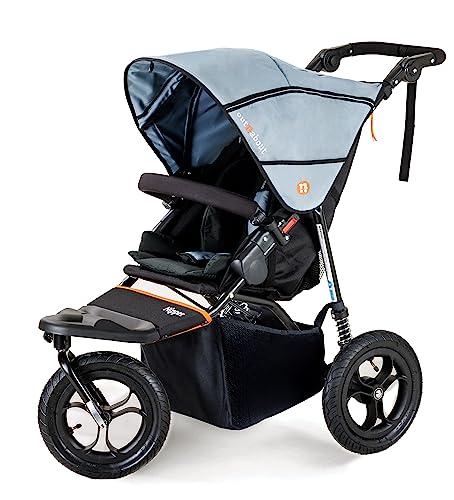Why You Must Experience Pram And Pushchair At A Minimum, Once In Your Lifetime
Understanding Prams and Pushchairs: A Comprehensive Guide
When entering the world of being a parent, one of the most vital choices to make includes selecting the ideal equipment for transferring a newborn or young child. Among the top competitors for this function are prams and pushchairs. Both serve the essential function of assisting moms and dads and caregivers bring their kids conveniently, but they have unique functions, advantages, and use cases that set them apart. This article aims to check out prams and pushchairs extensive, guiding prospective buyers through their important distinctions, benefits, and features, and addressing frequently asked concerns.
What is a Pram?
A pram, brief for “perambulator,” is a type of vehicle designed specifically for babies. It features a totally reclining seat or bassinet, so a baby can lie flat while being transferred. This is especially essential for newborns whose spines are still developing. Prams often have bigger wheels, supplying a smoother trip on different terrains.
Key Features of Prams:
- Fully Reclining Seat: Allowing infants to lie flat.
- Bassinet Design: Some models include a detachable bassinet.
- Roomy Interior: Adequate area for the kid to move conveniently.
- Robust Frame: Designed to be more steady, ideally matched for metropolitan and backwoods.
Advantages of Prams:
- Comfort: Provide a comfortable space for the baby.
- Adaptability: Many can be transformed to a pushchair as the kid grows.
- Stability: Larger wheels and frames provide greater stability, specifically on irregular terrain.
What is a Pushchair?
A pushchair is a light-weight option frequently used for young children. Unlike prams, pushchairs typically include a seat that can sit upright and may not provide a fully reclining option, making them appropriate for older babies who can support their heads and necks. Most contemporary pushchairs featured numerous features geared towards convenience for the parent and comfort for the kid.
Key Features of Pushchairs:
- Multi-position Seats: Can cater to sitting upright or reclining options.
- Light-weight Design: Easier to bring and maneuver.
- Foldable Framework: Often fold up compactly for easy storage and transport.
- Larger Storage Baskets: Convenient for bring baby fundamentals.
Advantages of Pushchairs:
- Lightweight and Portability: Easy to carry and keep.
- Steerability: Smaller wheels permit sharper turns.
- Ease of access: Easier access to older young children.
Secret Differences Between Prams and Pushchairs
Function
Pram
Pushchair
Age Recommendation
Newborn to 6 months
6 months to 4 years
Seat Position
Completely reclined
Multi-position
Weight
Much heavier
Light-weight
Surface Usage
Appropriate for all surfaces
Best for city/urban environments
Size
Larger, bulkier
Compact, easy to fold
Choosing the Right Option for Your Needs
The decision to choose in between a pram and a pushchair mainly depends upon your particular lifestyle and your kid's age. Here is a breakdown of factors to consider to assist narrow down the options:
Considerations for Prams:
- If you live in a backwoods with rough terrain, a durable pram might be better.
- If you prepare to use it for long walks or trips, the comfort of a pram can be advantageous.
- Ideal for moms and dads who desire a design that will easily support a newborn.
Considerations for Pushchairs:
- If you require something light-weight for city living or public transportation, a pushchair may be a better fit.
- For moms and dads who desire a versatile alternative for toddlers with numerous position settings.
- If storage area is an issue, the compact nature of pushchairs offers a service.
Typical FAQs
1. Can you use a pushchair for a newborn?
While numerous contemporary pushchairs provide reclining seats that can be utilized for newborns, it's usually recommended to utilize a pram or a pushchair with a bassinet alternative for appropriate assistance.
2. For how long can you use a pram or a pushchair?
Prams are usually used for babies up to 6 months, while pushchairs can be appropriate for children up to 4 years or more, depending on the model.
3. Are prams more expensive than pushchairs?
Prams are typically costlier due to their design, flexibility, and materials. However, expenses can differ widely depending upon brand, features, and age suggestions.
4. Is it essential to have both a pram and a pushchair?
Not necessarily. Lots of parents choose a 2-in-1 system that integrates both features, permitting them to adjust as their child grows.
5. What should I prioritize in choosing one?
Prioritize safety functions, convenience, weight, size, and how well it suits your way of life. Read evaluations, and test drive various designs when possible.
Picking in between a pram and a pushchair is an essential choice for new parents and caretakers. Both options have unique features that accommodate different age ranges and way of lives. By understanding pushchairsandprams.uk , advantages, and recommendations, parents can make a more educated option that meets their family's requirements. Whether embarking on a leisurely stroll in the park or navigating the pressure of city streets, the ideal pram or pushchair can boost the experience, supplying security and convenience for both the kid and the caretaker.
